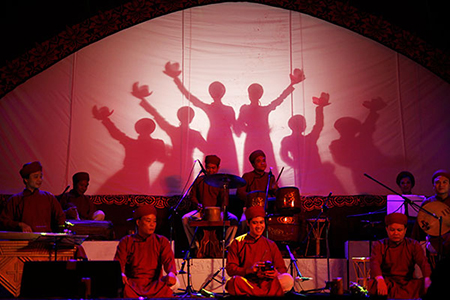Since the first millennium B.c., the Red River Delta has been the cradle of the Viet people's wet-rice-growing civilization within a culture reliant on villages. When farmers finished harvesting, they organized festivals to entertain themselves and thank the gods who had' supported them. They presented the first Cheo dramas in the courtyards of communal houses dedicated to the village tutelary god (thanh hoang).Bronze drums were part of ancient Vietnamese culture. For millennia, farmers have beaten drums to ask the gods for rain. It is not surprising therefore that the central musical instrument of Cheo is the drum.
Cheo originated in the tenth century from folk music and dance, especially tro nhai - simple mimetic skits. These skits showed the lives of ordinary people as well as members of the royal family. Over time writers consolidated Cheo's short stories based on these skits into longer united plays.

Most significant in this development was the Vietnamese capture of a soldier from the Mongolian army in the fourteenth century. The soldier was an actor who introduced Chinese opera to Vietnam. Previously cheo involved speaking and sometimes the rhythmic reciting of folk poems but no singing. As a result of the captured soldier's influence, cheo turned into kich hat) or sung drama.
In the fifteenth century, King Le Thanh Tong, who was deeply influenced by Confucianism, restricted the performance of cheo in his court. Without royal patronage cheo returned to its original supporters the farmers. It drew on nom stories, which were Vietnamese verse narratives written in modified Chinese characters. By the eighteenth century, this form of Cheo had become widely influential. Cheo continued to develop and reached its peak by the end of the nineteenth century.



